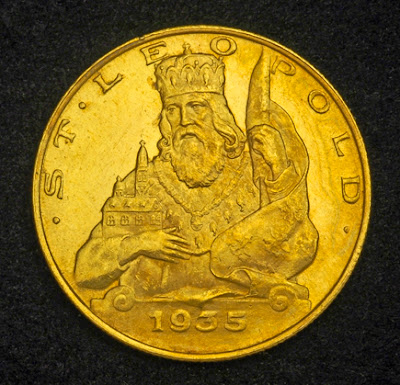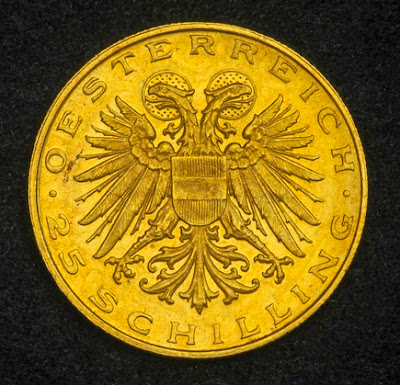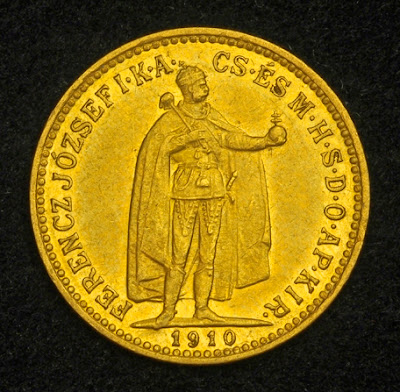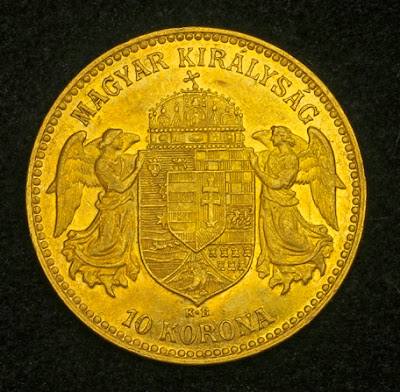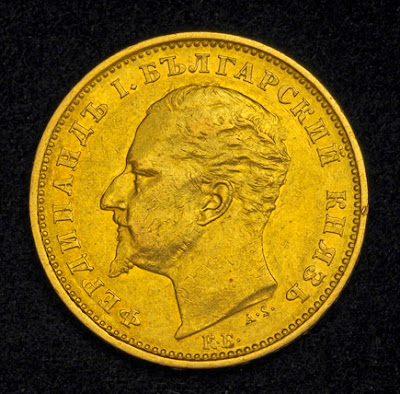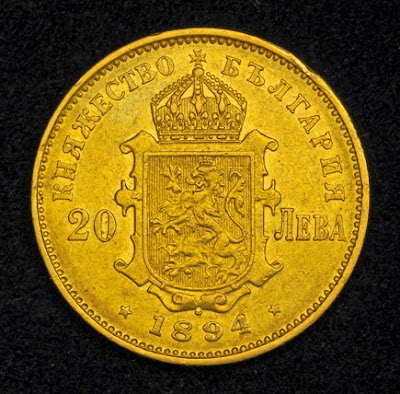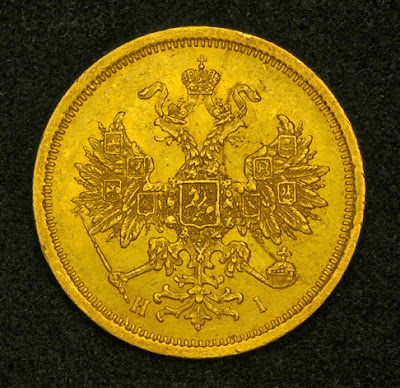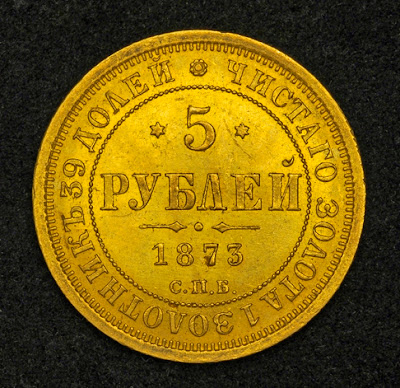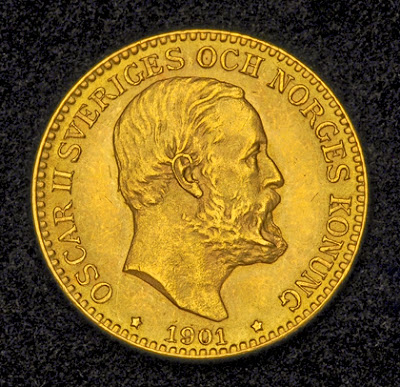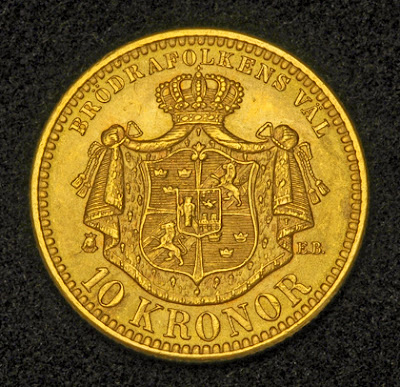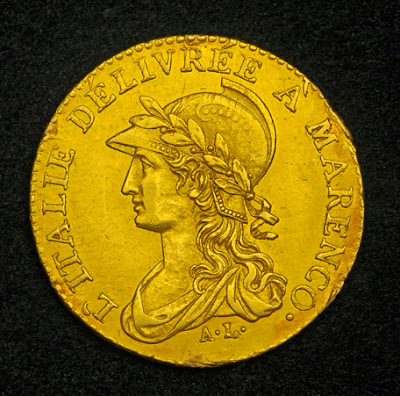 |
| Investing in gold - Napoleon 20 franc gold coin |
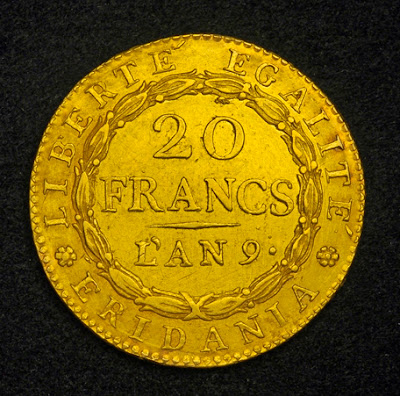 |
| Napoleon 20 francs gold coin |
Italian States Gold Coins, French gold coins, collection of French coins, French Coins of Napoleon Bonaparte, Gold Coins of Europe, French Coinages, French Gold Money and Coins, European Coins, Collecting the Coins of France, Gold Coins of Napoleon Bonaparte.
Obverse: Helmeted, draped and wreathed female bust left. Engraver´s initials (A.L.) below.
Legend: L'ITALIE DELIVERÉE A MARENCO .
Reverse: Value (20 FRANCS) above date ( L'AN 9. = 1800) within wreath.
Legend: LIBERTÉ EGALITÉ * ERIDANIA *
Mint Year: 1800 (An 9).
Mint Place: Turin (Italy)
Mintage: Only 2,820 pcs
Diameter: 22 mm; Weight: 6.48 gram of Gold (.900)
The Napoleon, or Marengo, is a gold coin with value of 20 francs, coined in 1801 in the Subalpine Republic to celebrate the victory of Napoleon Bonaparte against Austrians on June the 14th 1800. This type of coin was produced between 1803 and 1815, with a weight of 6,45 grams and a gold content of 900 milliseconds. After the fall of Napoleon, the production of coins of the same type continued and all gold coins with value of 20 francs, produced in France in nineteenth century, were called Marengo. After the establishment of the Latin Monetary Union, the name Marengo was extended also to other coins of the union with the same value, including the 20 Italian lire.
The Battle of Marengo was fought on 14 June 1800 between French forces under Napoleon Bonaparte and Austrian forces near the city of Alessandria, in Piedmont, Italy. The French overcame General Michael von Melas's surprise attack near the end of the day, driving the Austrians out of Italy, and enhancing Napoleon's political position in Paris as First Consul of France in the wake of his coup d’état the previous November.
